What is PRP for the face?
PRP for the face, or Platelet-Rich Plasma (PRP), is one of the popular and effective methods in the field of beauty and skin rejuvenation, designed based on the body’s natural healing abilities. This method is not only seen as an attractive solution for skin rejuvenation but also recognized as a common and effective therapeutic treatment. PRP for the face, using your blood platelets, triggers the process of stimulating the growth of new cells. This process leads to improved complexion, skin texture, and reduced signs of aging. In fact, PRP is considered a regenerative treatment that utilizes the therapeutic properties of blood components for anti-aging and skin rejuvenation purposes.
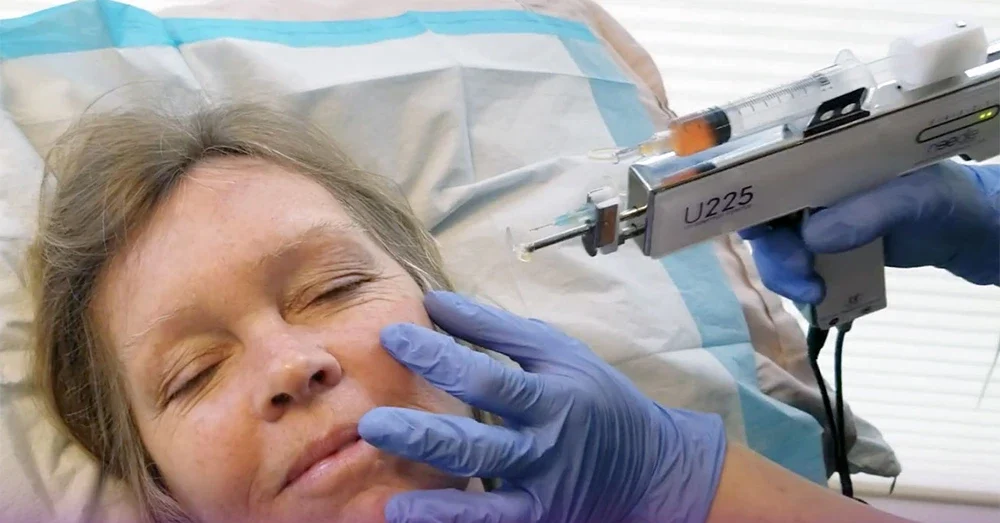
Considering that PRP is widely used in the beauty industry and its effectiveness has a significant impact on skin rejuvenation, consulting with a dermatologist or trichologist for this procedure is crucial. These treatment stages are not only recognized as an attractive method for improving the appearance of the skin but also have positive and effective results.
Therefore, if you are looking for an effective method for skin rejuvenation and improving its color and texture, PRP is an excellent and effective option that can help you achieve the desired beauty and youth. It is recommended to consult with a specialist before undergoing this treatment and to evaluate the best strategies for using PRP.
Steps for Performing PRP on the Face
The steps for performing PRP (PRP) on the face are as follows:
-
First, the area of the face that will receive the PRP injection is thoroughly cleaned. This procedure is performed to remove any impurities and prepare the area for treatment.
-
Then, the PRP substance is placed in a syringe or an appropriate injection device and prepared for injection.
-
The PRP injection is administered in a punctuated manner, adjusting the depth of the skin. This ensures that the substance reaches the required depth for optimal results.
The duration of the PRP injection may be about an hour. However, this time may vary depending on the conditions and needs of the individual.
How is PRP for the Face Done?
Would you like to know how PRP for the face is done? The steps for performing PRP for the face are as follows:
-
In the first step, the area to be injected with PRP is thoroughly cleaned to remove any impurities from the targeted site.
-
In the second step, the PRP substance is placed in a syringe or injection device and prepared for injection.
-
PRP injection is done in a punctuated manner and with depth adjustment. This ensures that the components are delivered to the required depth for optimal impact.
PRP Facial Cost
The cost of PRP facial treatments varies significantly and depends on factors such as the clinic’s location, the doctor’s experience, and the type of treatment. Typically, the procedure starts at around 2 million Tomans, and if combined with microneedling, it may add an additional 500,000 to 1 million Tomans to the cost. However, the cost may vary by location and specific circumstances. Therefore, the best way to get an accurate price for this treatment is to consult directly with the doctor or visit the relevant center.
Side Effects of PRP for the Face
Using PRP (PRP) for facial skin improvement and beauty is generally safe, but like any medical or cosmetic procedure, it may come with potential side effects and risks. One of the most common side effects of PRP for the face is a reaction at the injection site. This includes mild bruising, swelling, or redness at the injection point. These symptoms typically resolve on their own within a few days to a week, but they may last longer in some cases. Another potential risk is that the injection site may become infected. As with any injection method, there is a risk of infection, which can be minimized by following strict hygiene practices and using appropriate equipment.
Some people may experience pain or discomfort at the PRP injection site; however, this is usually short-lived and can be alleviated using local pain relief medication.
Although rare, there is a risk of nerve damage that may occur during the PRP injection process. Therefore, it is very important that the procedure is performed by an experienced and skilled specialist to minimize the risks of such injuries.
Lastly, it is always possible that the results may not meet the patient’s expectations. This may be due to various factors such as the body’s response to PRP, the injection technique, or skin issues. In such cases, consulting with the treating doctor for decisions on how to proceed with the treatment is recommended.
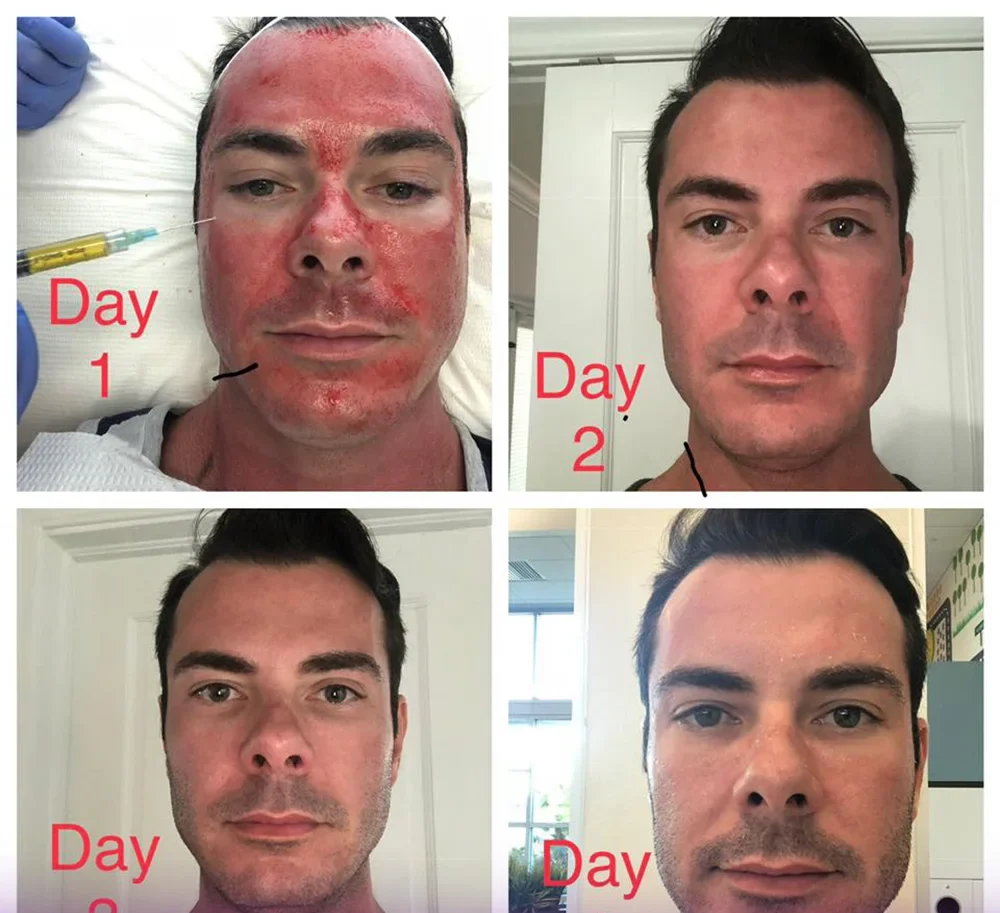
Post-PRP Facial Care
After undergoing a PRP facial treatment, following proper post-treatment care is essential to achieve the best results and minimize any side effects.
In the first few days following the treatment, avoid using makeup to allow the treated area to heal properly. When cleaning your face, gently touch the injection site and refrain from rubbing or massaging it to reduce the chance of irritation.
To prevent swelling and bruising, avoid strenuous exercise and heavy physical activity in the initial days after the treatment. Additionally, protecting the treated area from the sun by using sunscreen is critical.
Avoid prolonged exposure to heat or cold, and stay away from environments that could irritate the treated area.
In the early days, use gentle skincare products and then return to your regular skincare routine. Also, keep your skin well-hydrated by drinking plenty of water and using an appropriate moisturizer.
By following these care tips, you can speed up healing and maximize the benefits of your PRP facial, achieving better results.
PRP Facial Points
When it comes to PRP facial points, it’s important to note that this method can be used to treat various skin concerns on different areas of the face. The PRP facial points include:
-
Under the eyes
-
Eyebrows
-
Cheeks
-
Smile lines
-
Lips
-
Gums
Benefits of PRP Facial
The benefits of PRP facial treatments are extensive and unparalleled compared to other beauty procedures. PRP facial or platelet-rich plasma treatment can be done as a standalone procedure or in combination with other treatments such as laser therapy or microneedling. But what makes PRP facial so popular and what are its numerous advantages?
-
Treats Skin Sagging: PRP treatment can significantly reduce old skin damage in 1 to 3 sessions. PRP stimulates collagen production by penetrating deep into the dermis and helps regenerate connective tissue, resulting in firmer skin and a lift after treatment. In dermatology, PRP is often combined with other cosmetic treatments for better results. For example, combining PRP with CO2 fractional laser, microdermabrasion, or microneedling can significantly improve deep scars and skin texture.
-
Reduces Scars and Acne: Many individuals between the ages of 18 and 30 struggle with acne. PRP facial treatment can help reduce acne damage. The injections contain a concentration of platelets, growth factors, stem cells, and other components that initiate neocollagenesis, the process of forming new collagen. By placing PRP serum under scars, dermatologists can reduce skin indentations and stimulate collagen production.
-
Treats Hyperpigmentation: Hyperpigmentation is a condition where the skin appears discolored or spotted due to excess melanin. Hyperpigmentation issues can be addressed with microneedling combined with platelet-rich plasma, which creates microchannels in the skin to increase collagen production. This can improve skin tone and help resolve issues like hyperpigmentation, scars, melasma, or sun spots, leaving the skin smoother and healthier.
-
Increases Collagen Production: After the age of 25, the body’s collagen production significantly decreases and continues to drop with age unless steps are taken to stimulate it. Additionally, the quality of collagen produced diminishes, leading to unhealthy skin. If you’re frustrated with fine lines, moderate wrinkles, or deep folds, PRP treatment can help improve your skin’s quality by boosting collagen production. Collagen production is triggered when skin cells are damaged, and when PRP’s tiny needles penetrate the upper layers of the skin, they promote the healing process and trigger the production of stronger, healthier collagen.
-
Reduces Fine Lines and Wrinkles: Fine lines and wrinkles are among the most common reasons people opt for facial rejuvenation with PRP. These lines are common signs of aging that can be treated by improving cellular circulation, which occurs during PRP treatment. After PRP, old skin cells are recycled, and new cells, collagen, and elastin are produced. Additionally, fine lines and wrinkles are reduced as the skin naturally tightens in response to the microdamage caused by the treatment. Deeper wrinkles and hollows are filled as the treated areas plump up.
-
Tightens the Skin: As mentioned earlier, collagen is essential for skin firmness. As we age, the skin starts to sag and thin, especially in specific areas of the face, like the lips and cheeks. However, PRP treatment helps make the skin firmer as collagen is produced. Some individuals even use this procedure to plump up their lips.
-
Helps Retain Skin Moisture: The stronger and thicker the skin, the better it can protect deeper layers from external irritants. A strong skin barrier also helps retain moisture, making the skin more receptive to moisturizers. Overall, PRP facial treatment can help reduce the appearance of pores and enhance the overall beauty of the skin.
-
Quick Procedure: The PRP facial process may seem lengthy. For example, the patient’s blood is first drawn into a syringe, then processed in a centrifuge to separate the components. This processing includes cleaning the blood to prepare it for transfer, injection, and separation of its components. However, the process doesn’t take long; it only takes about 3 to 5 minutes for the centrifuge to separate the blood components. Ultimately, depending on the size of the areas the patient wants treated, the procedure usually lasts between 30 to 60 minutes.
-
Minimal Preparation Required: Another unique benefit of PRP facial rejuvenation is that it doesn’t require extensive preparation. During the initial consultation, the doctor will provide you with a list of pre-PRP instructions. For instance, seven days before the treatment, always use sunscreen when going outside, drink plenty of water, and arrive for your appointment without makeup. Avoid using moisturizers and other skincare products, and ensure your face is thoroughly clean before the treatment.
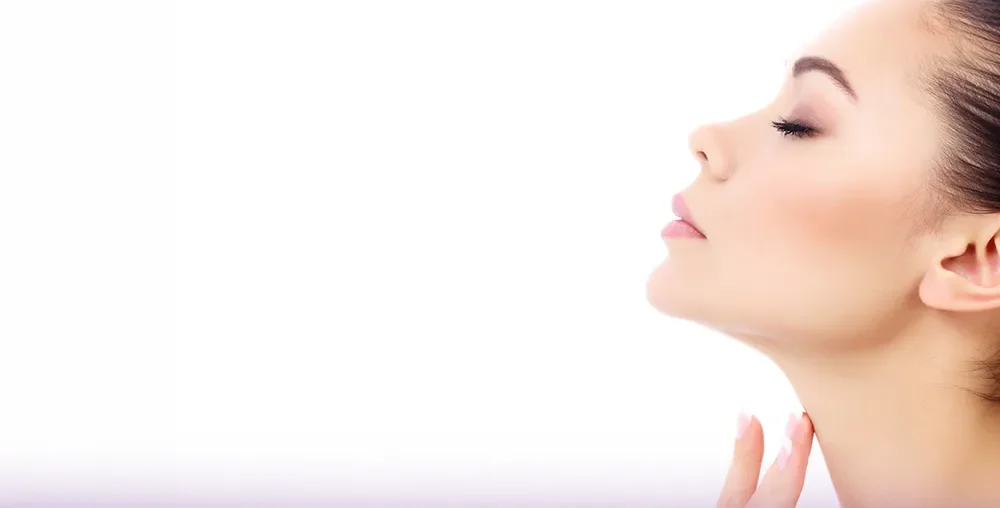
How Long Does PRP Facial Last?
You might have wondered by now, how long does the effect of PRP facial last? Generally, the longevity of PRP depends on various factors such as skin type, age, lifestyle, and more. Typically, the results last between one to two years. Additionally, the long-lasting effects of PRP distinguish it from other skin rejuvenation methods. It’s also important to note that following proper post-treatment care plays a significant role in improving and prolonging the results of this procedure.
Best PRP Clinic in Tehran
The best PRP clinic in Tehran is one that uses the best equipment and the most experienced doctors to treat their patients. However, these two factors are not the only qualities that define the best PRP center in Tehran. A PRP center in Tehran:
-
Uses the best materials and proper techniques to enhance the longevity of PRP results for patients.
-
Charges lower fees compared to surgical treatments.
-
Uses sterilized and disinfected equipment to minimize the risk of infection.
-
Strives to perform the procedure with minimal pain for patients.
-
Provides PRP treatment without the need for total rest or hospitalization.
How Far Apart Should PRP Sessions Be?
The interval between PRP sessions depends on various factors such as the severity of skin concerns and the doctor’s advice. However, in general, it is recommended to schedule PRP facial sessions with intervals of 4 to 8 weeks to achieve optimal results. Additionally, the effects of PRP facial rejuvenation last longer with annual injections.
How Effective is PRP Facial?
The effectiveness of PRP facial depends on various factors. In some cases, combining PRP with other beauty treatments may be necessary to achieve better results. The key factors influencing the effectiveness of PRP include:
-
Experience of the doctor
-
Severity of skin issues
-
Number of sessions
-
Proper pre-treatment care
-
Correct and proper post-treatment care
Applications of PRP Facial
PRP facial has a wide range of applications. Treatment with platelet-rich plasma (PRP) is widely used for skin rejuvenation and beauty purposes. Some of the major applications of this method include:
-
Facial rejuvenation
-
Scar treatment
-
Treatment of dark circles or wrinkles around the eyes
-
Skin brightening
-
Reducing fine lines
-
Skin tightening
-
Skin strengthening
-
Treatment of crow’s feet
-
Reducing under-eye puffiness
-
Improving scars or acne rosacea
-
Treating diabetic wounds
-
Stimulating new cell growth and production
-
Enhancing skin texture
PRP for Facial Rejuvenation
One of the main uses of PRP is for facial rejuvenation. PRP can improve the skin texture of the face and reduce fine lines or wrinkles, especially around the mouth and eyes.
PRP for Acne Scars
Using PRP for acne scars has gained popularity among beauty seekers. Platelets in the blood have numerous benefits, including stimulating collagen and elastin growth, which contribute to healthy and youthful-looking skin. When the patient’s blood is injected into the skin, the body naturally begins to repair itself, helping to eliminate acne scars. Skin specialists believe that combining PRP with other treatments is the most effective approach for treating acne scars.
PRP for Skin Spots
PRP is also used for treating skin spots. It helps reduce face spots and improve acne scars. By using the person’s own platelets to stimulate new cell growth, PRP helps reduce various skin imperfections such as scars. Additionally, the growth factors in PRP aid in healing and rebuilding skin tissue, which significantly reduces spots and improves the overall skin quality.
PRP for Dark Circles and Wrinkles Around the Eyes
PRP is very effective for treating dark circles and wrinkles around the eyes. Wrinkles and dark circles under the eyes are often caused by aging shadows that develop beneath the eyes. These changes lead to darkening or the appearance of lines, which may be unpleasant for some individuals. PRP can be used to treat these dark circles or pigmentation under the eyes, as the plasma helps repair and rejuvenate the skin under the eyes.
PRP for Surgical Scars
Can PRP be used for surgical scars? PRP facial treatment has the ability to completely eliminate acne or surgical scars. It can also improve the appearance of the skin around surgical scars, making them less visible. Therefore, PRP facial treatment can reduce the appearance of surgical scars.
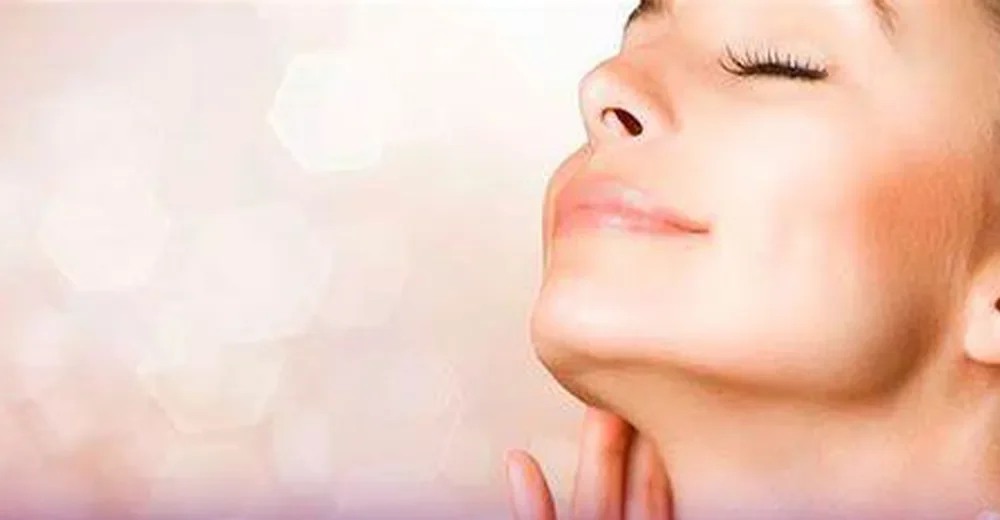
Who is PRP Facial Treatment Suitable For?
You might be wondering who PRP facial treatment is suitable for. Overall, PRP is a safe method, and most people can benefit from it. However, individuals with the following conditions are ideal candidates for this treatment:
-
People with skin issues such as wrinkles, scars, or acne
-
Stimulating hair growth in individuals suffering from hair loss
-
Helping accelerate hair growth in individuals who have undergone hair transplants
-
Athletes who wish to improve their muscle and joint conditions can use this technique
-
Patients of all ages suffering from a wide range of musculoskeletal injuries
-
Patients with arthritis can use this treatment to alleviate their pain. It’s worth noting that younger patients or those with milder symptoms tend to achieve better results from this treatment.
Pre-PRP Facial Care and Considerations
How important are the pre-PRP facial care instructions? PRP facial treatment is a quick, safe, and natural method for treating various skin conditions. However, to achieve optimal results, it’s essential to follow the pre-treatment care instructions. By following these guidelines, you can ensure you get the most out of your treatment plan.
-
Avoid taking Accutane pills for 6 months before undergoing PRP.
-
5-7 days before the PRP treatment, refrain from using topical medications that could increase skin sensitivity, including retinoids, topical antibiotics, exfoliants, acids that could dry or irritate the skin (such as alpha hydroxy acid (AHA), beta hydroxy acid (BHA), exfoliating masks, salicylic acid, acne products, hydroquinone, and benzoyl peroxide).
-
Refrain from taking anti-inflammatory medications such as ibuprofen, Motrin, or Advil for 3 days before the treatment, as they interfere with the natural inflammatory process that is essential for rejuvenating your skin.
-
Avoid other cosmetic procedures like hair removal lasers and unprotected sun exposure for 2 weeks before the treatment.
-
Avoid waxing, hair removal creams, or electrolysis on the treatment area for 5-7 days before the procedure.
-
To avoid skin irritation, do not shave your face on the day of the treatment. If you have dense hair in the treatment area, shave it the day before.
-
Ensure your face doesn’t have moles, warts, or actinic keratosis (sun-induced). If you are prone to cold sores, take antiviral medication 2 days before and on the day of the treatment.
-
Drink plenty of water, especially at least 1 liter on the day of the treatment.
-
Avoid caffeine on the treatment day.
-
Have a good meal an hour before the procedure.
-
If you have a history of difficulty finding veins during blood draws, exercise on the morning of the procedure to increase blood circulation.
-
Inform your provider about any changes in your medical history and medications.
-
Notify your doctor about any tattoos in the treatment areas.
What Age Is PRP Facial Treatment Suitable For?
Generally, people of all ages can undergo PRP facial treatments, but the best time to start varies:
-
Before 30: People in their 20s can undergo PRP yearly to prevent premature aging and skin wrinkles.
-
30 to 40 years old: At this age, it is important to use PRP every 6 months to maintain youthful skin. Wrinkles begin to appear in this age group, and PRP serves as a preventative treatment.
-
40 to 50 years old: People in this age range should have PRP treatments every 3 months, over 3 sessions, and continue if they see favorable results.
Post-PRP Facial Care
Following post-treatment care is critical to achieving the best results from PRP facial therapy. It also minimizes the chances of side effects. Here’s a list of post-PRP care:
-
Avoid direct sun exposure for 24 hours.
-
Refrain from consuming alcohol and smoking for 24 hours.
-
Avoid intense physical activities for at least 12 hours.
-
Avoid touching your skin as much as possible.
-
Avoid washing your face with any products for 12 hours.
-
Use a clean pillowcase after the treatment. It’s recommended to use a new or freshly washed pillowcase for 3-4 nights to reduce infection risks.
-
Drink plenty of water to stay hydrated and keep your skin moisturized.
-
Avoid scratching or touching your face.
-
Do not wear makeup for 12 hours after the treatment.
-
Avoid using active skincare products like AHA, retinoids, or Vitamin C for 24 hours.
-
Avoid other skin treatments affecting the treated area for at least 14 days.
Common Side Effects of PRP Facial Treatment
While PRP facial treatment is generally considered safe, some common side effects may occur. Here are some side effects patients should be aware of:
-
Pain or discomfort at the injection site: Some discomfort, sensitivity, or mild pain may be felt at the injection site after the treatment. This is a natural response to injections and typically resolves within a few hours. Over-the-counter pain relievers can help.
-
Swelling: Swelling is part of the body’s natural healing process and usually resolves within 48 hours. A cold compress on the affected area can help reduce swelling.
-
Bruising: Bruising can occur if small blood vessels near the injection site rupture. It’s typically temporary and resolves naturally, like a minor injury bruise. Avoiding blood-thinning medications before the procedure can reduce excessive bruising.
-
Redness and irritation: Temporary redness or irritation may occur at the injection site due to inflammation. It typically fades within a few hours or days, but if it persists, your healthcare provider may recommend over-the-counter creams for relief.
-
Itching: Mild itching may occur, which is usually temporary. Antihistamine creams or following the specialist’s advice can help control it. Avoid scratching the treated area to prevent complications.
Does PRP Cause Facial Weight Gain?
Many patients ask if PRP causes facial weight gain. PRP generally does not affect the volume or slimming of the face significantly. The primary benefit of PRP is to stimulate collagen production and rejuvenate the skin. However, if individuals want a fuller face using PRP, they can ask their doctor to combine fat with the PRP solution and inject it into the face. This process not only enhances facial volume but also helps increase the longevity of the PRP results.
Does PRP Cause Pain?
The most common question from patients is whether PRP is painful. The pain level during PRP depends on each person’s pain tolerance. Mild discomfort may be felt during the injection process, but local anesthesia can minimize the discomfort, and there’s no cause for concern.
Is PRP Cancerous?
No, PRP is not cancerous. This is because PRP uses the patient’s own blood, so there are no concerns regarding immune reactions or disease transmission. No studies have shown any link between PRP and cancer or tumor growth. Growth factors used in PRP are naturally occurring and help heal wounds through gene regulation and feedback mechanisms, not through mutations.
PRP vs. Mesotherapy for the Face
Both PRP and mesotherapy are common treatments for skin rejuvenation. PRP uses the patient’s blood plasma, while mesotherapy involves injecting a combination of vitamins, antioxidants, and moisturizers into the skin. PRP might be more suitable for those looking for a natural, body-based solution, while mesotherapy works quickly to nourish and enhance the skin.
Differences Between PRP and Mesotherapy
PRP vs. mesotherapy: Many patients are unsure whether to choose PRP or mesotherapy. Here’s a comparison:
-
Mesotherapy injects enzymes, vitamins, and other compounds into the skin, while PRP injects platelet-rich plasma.
-
PRP uses a machine to separate plasma, while mesotherapy uses needles to inject compounds.
-
The injection sites differ: mesotherapy targets the middle skin layer, while PRP affects all skin layers.
-
PRP has fewer side effects, while mesotherapy has some risks.
-
PRP usually requires 3 sessions, while mesotherapy may require 5+ sessions.
-
Each mesotherapy session lasts 15 minutes, while PRP sessions take around 30 minutes.
-
Mesotherapy costs less than PRP.
-
PRP is suitable for all adults aged 18+, while mesotherapy is recommended for people between 18-65 years old.
- PRP offers longer-lasting results (6 months to 2 years) compared to mesotherapy (8-12 months).
- PRP stimulates growth factors and cell regeneration, while mesotherapy enhances cell repair and skin health.


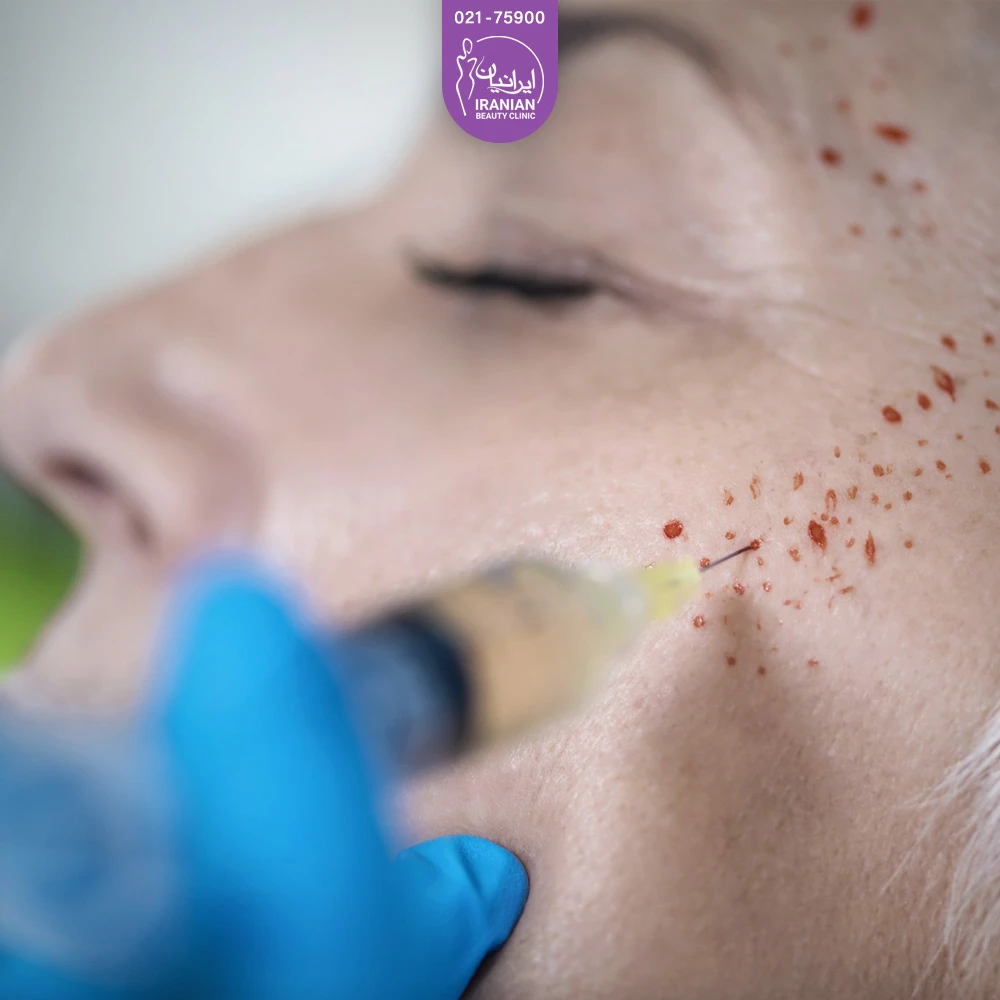






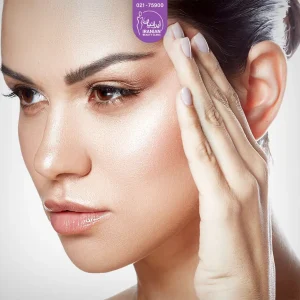
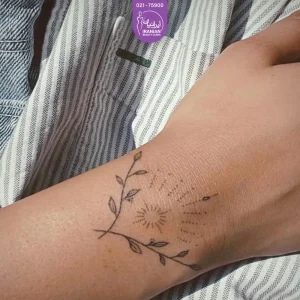
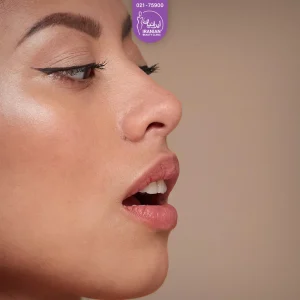
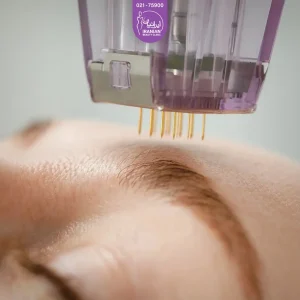
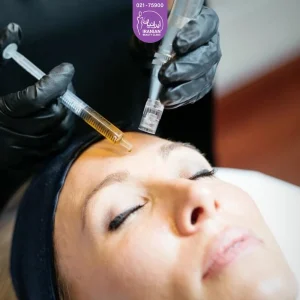
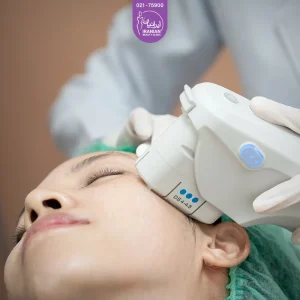
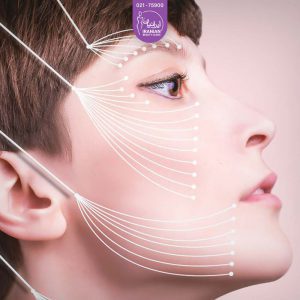
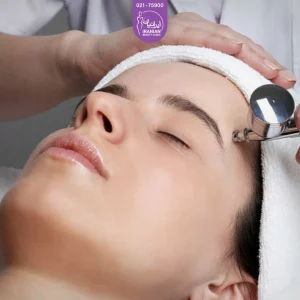
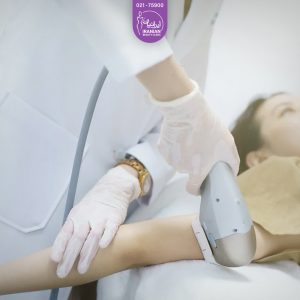
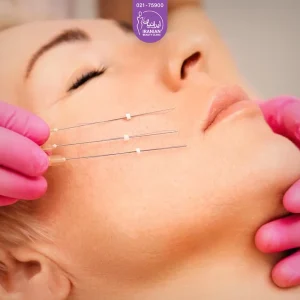

 Quanta Creative Agency
Quanta Creative Agency 